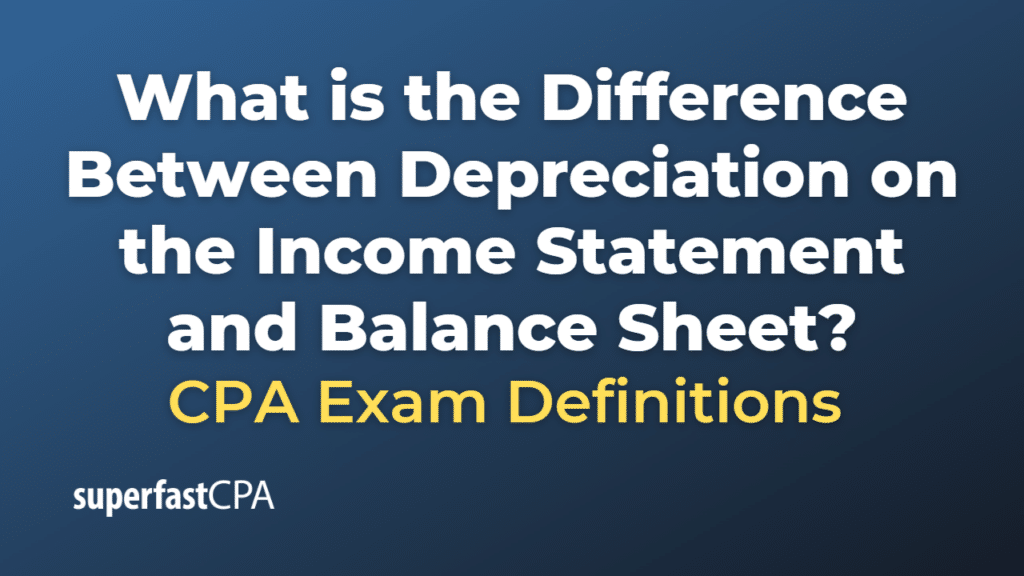Difference Between Depreciation on the Income Statement and Balance Sheet
Depreciation appears in both the income statement and the balance sheet, but it serves a different purpose in each financial statement:
- Depreciation on the Income Statement: Here, depreciation is listed as an expense. It is part of the cost of running the business and is used to reduce the company’s taxable earnings. The depreciation expense for a specific period (like a month, quarter, or year) reflects the portion of the cost of the company’s assets that has been used up during that period.
- Depreciation on the Balance Sheet: On the balance sheet, depreciation is accumulated in a contra-asset account called “Accumulated Depreciation,” which is subtracted from the company’s total assets. This reflects the fact that the company’s long-term assets (like machinery, equipment, and buildings) lose value as they age. The balance in the Accumulated Depreciation account increases over time as more depreciation is charged against the assets.
In summary, on the income statement, depreciation is an expense that reduces the company’s earnings, while on the balance sheet, it is a contra-asset account that reduces the value of the company’s long-term assets.
Example of the Difference Between Depreciation on the Income Statement and Balance Sheet
Let’s consider a hypothetical company, “BizCo,” that purchases a piece of equipment for $50,000. The equipment is expected to have a useful life of 10 years, with no expected salvage value (the estimated resale value at the end of its useful life). BizCo uses straight-line depreciation, meaning the equipment will depreciate evenly over its useful life.
Depreciation on the Income Statement:
In the first year, the depreciation expense would be $5,000 ($50,000 / 10 years). This $5,000 is reported as an expense on the income statement, reducing BizCo’s pre-tax earnings for the year by that amount.
Depreciation on the Balance Sheet:
On the balance sheet, the original cost of the equipment ($50,000) is recorded as a long-term asset. The Accumulated Depreciation account is increased by $5,000 each year, reducing the book value of the equipment.
So, after the first year, the balance sheet would show:
- Equipment: $50,000
- Less: Accumulated Depreciation: $5,000
- Net Book Value: $45,000
After the second year:
- Equipment: $50,000
- Less: Accumulated Depreciation: $10,000 ($5,000 from Year 1 + $5,000 from Year 2)
- Net Book Value: $40,000
This continues each year until the net book value reaches $0 after 10 years, at which point the equipment is fully depreciated.
In this example, the depreciation expense on the income statement reduces BizCo’s taxable income each year, while the Accumulated Depreciation on the balance sheet reflects the total amount that the equipment’s value has decreased over time.













